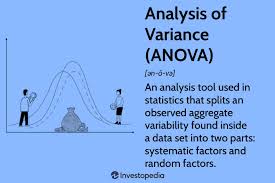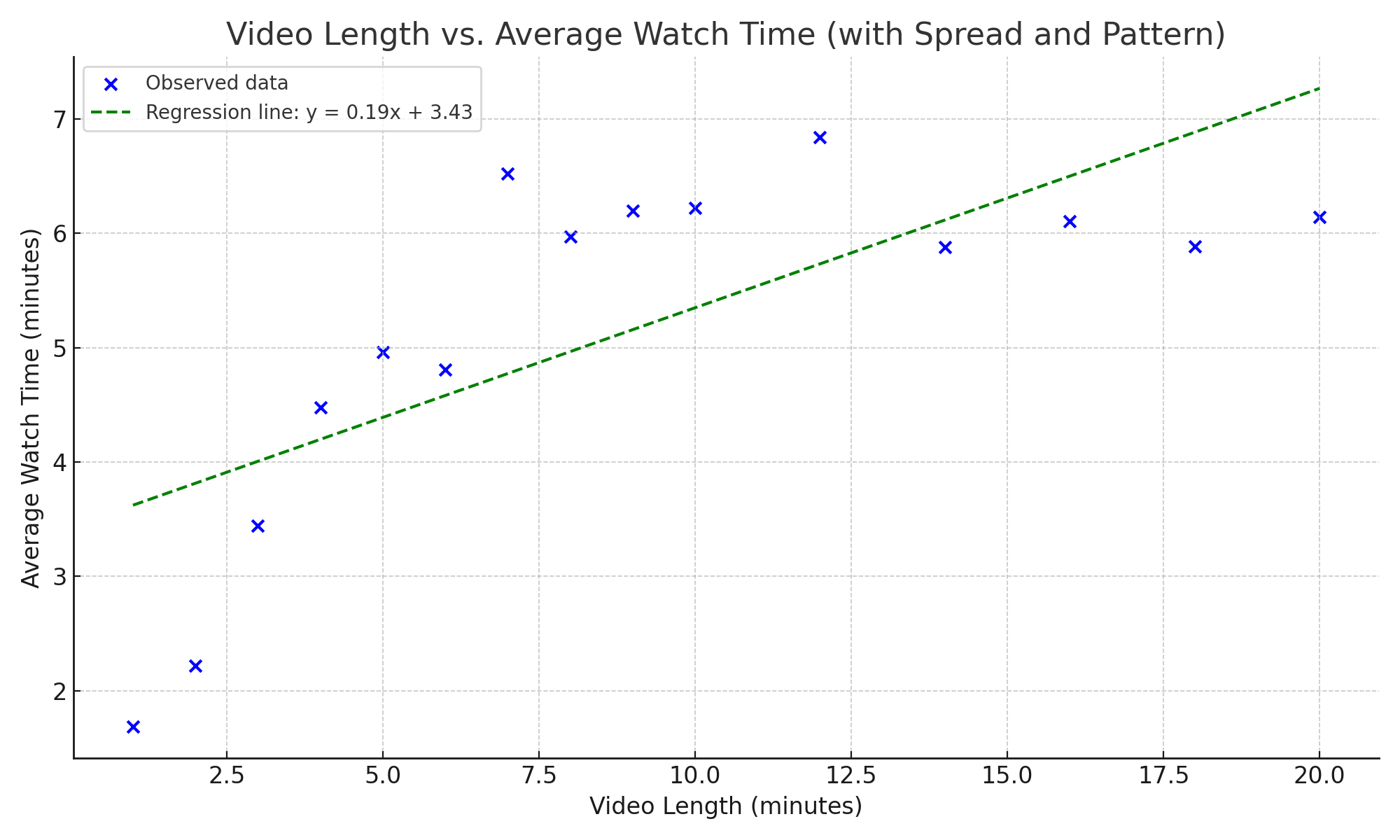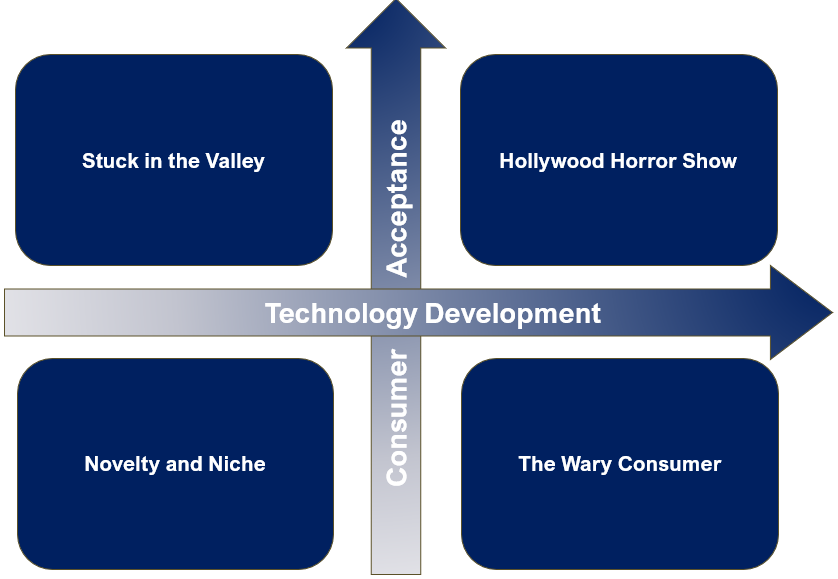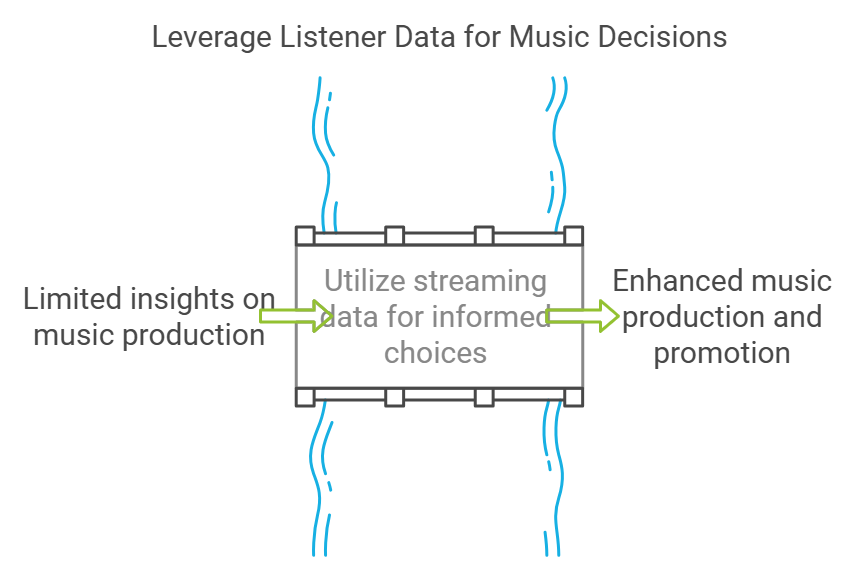Author: Frank Weissman
-

Collaborative Streaming Infrastructures in Europe
Europe’s streaming market remains fragmented due to linguistic, cultural, and regulatory divisions, preventing the rise of a unified platform like Netflix. This research explores how collaborative infrastructures—such as the Bedrock platform—enable national broadcasters to share technology while maintaining editorial independence. Through co-opetition, these ventures aim to achieve scale, reduce costs, and enhance user experience, offering…
-

What does ANOVA in Social Media Marketing?
This educational webpage introduces media students to the fundamentals of ANOVA and the t-test, two essential statistical tools for analyzing data in social media marketing. It explains how ANOVA helps compare the effectiveness of different platforms, content types, or influencer strategies
-

Metrics (Don’t) Matter! Media Measurement; Digital Age
In today’s fragmented media landscape, traditional metrics like viewership and subscriber counts are no longer enough. Drawing from the podcast “The Metrics Don’t Matter” with Evan Shapiro and Marion Ranchet, this essay explores how media professionals must move beyond vanity metrics to embrace tools and measurements that reflect real audience engagement. From attention metrics to…
-

What has Linear Regression ever done for you?
Understanding Linear Regression in Media Studies This webpage offers a clear and practical introduction to linear regression tailored for students in media studies. It explains core concepts like the regression equation, slope, and intercept, and connects them directly to real-world media scenarios—such as predicting viewer engagement based on video length. The resource includes: Step-by-step guidance…
-

Optimizing User Experience in the Era of Streaming
Research Proposal: Optimizing User Experience in the Era of Streaming Overload—Exploring Interface Design, AI Integration, and Cross-Platform Solutions for Content Discoverability
-

Improving television production and development processes
Eight ideas for television production research!
-
Ten Questions on Broadcast Disruption
1. How has streaming affected the revenue models of traditional television broadcasters? 2. What are the key factors influencing audience migration from broadcast TV to streaming services? 3. How do younger audiences (16–34) engage with YouTube compared to traditional television? 4. What strategies are traditional TV production companies adopting to compete with digital content creators?…
-

Disruption of the TV industry
The analysis of television viewing trends highlights the profound impact of streaming services on traditional TV consumption. According to Ofcom’s data, the main Public Service Broadcasting (PSB) channels in the UK have experienced a significant decline in their market share, from 100% in 1988 to approximately 51% in 2017. A parallel trend is evident in…
-

The evolution of AI Video Development: Scenarios and Implications
By 2030, AI video tools achieve photorealism and temporal coherence, enabling synthetic actors and environments indistinguishable from live-action footage. Consumers enthusiastically adopt AI-generated content for genres like horror, sci-fi, and personalized interactive media, drawn by hyper-customized narratives that adapt to individual preferences in real time (Lee & Kim, 2024). Studios leverage these tools to slash…
-
The Future of Video Content Creation in the Age of Generative AI
Generative AI (GenAI) has the potential to revolutionize video content creation by drastically reducing production costs and making filmmaking more accessible. However, challenges like realism, audiovisual synchronization, and creative control still hinder AI from matching traditional productions. Scenario planning suggests various futures for AI in video, from niche uses to full industry transformation, though human…
-
The Evolution of Sports Media Rights:
Impact on Broadcasting and Streaming PlatformsThe Evolution of Sports Media Rights: Impact on Broadcasting and Streaming Platforms Introduction The sports media landscape is undergoing a significant transformation. Once dominated by traditional broadcast television, the industry is now heavily influenced by the rise of streaming platforms. These services, recognizing the power of live sports in attracting…
-
ZDF in the Age of Digital Streaming:
Introduction The landscape of media consumption has transformed drastically over the past decade, shifting from traditional linear broadcasting to digital streaming platforms. Among the key players in this transformation are ZDF Studios and YouTube, two distinct yet influential entities in the digital content ecosystem. ZDF Studios is the commercial arm of Germany’s largest public-service broadcaster,…
-
How to Measure Loss Aversion
To measure loss aversion among consumers in marketing, you can use the following approaches: 1. **Behavioral Experiments**: Design experiments where participants choose between options framed as potential losses or gains. For example, test whether consumers are more likely to act when told they could “lose $10” versus “gain $10” for the same decision[2][6]. 2. **A/B…
-

Loss Aversion in Marketing:
Loss aversion, a cornerstone of behavioral economics, profoundly impacts consumer decision-making in marketing. It describes the tendency for individuals to feel the pain of a loss more strongly than the pleasure of an equivalent gain (Peng, 2025), (Frank, NaN), (Mrkva, 2019). This psychological principle, far from being a niche concept, permeates various aspects of consumer…
-

Research Ideas: Loss Aversion and Marketing
Ten research suggestions building upon the existing literature on loss aversion’s impact on marketing and commercial strategies. The preceding analysis highlighted the significant influence of loss aversion on consumer behavior, shaping decisions across various marketing aspects, from advertising and pricing to product design and customer loyalty. These suggestions aim to address gaps in current understanding…
-

Loss Aversion in Marketing and Commercials: A Multifaceted Analysis
Loss aversion, the psychological principle that the pain of a loss is felt more strongly than the pleasure of an equivalent gain (Guttman, 2021), (Schulreich, 2020), profoundly impacts consumer decision-making. This disproportionate weighting of losses over gains significantly shapes how consumers perceive value, make choices, and respond to marketing messages
-

YouTube Strategy for Traditional Media: Channel 4’s Approach
Channel 4’s approach to YouTube demonstrates that traditional broadcasters can successfully adapt to the changing media landscape. By embracing data-driven decision-making, tailoring content to platform-specific audiences, and maintaining a flexible strategy, broadcasters can turn potential threats into opportunities for growth and audience engagement.As the lines between traditional and digital media continue to blur, the experiences…
-
Confidence Interval
As a teacher, I often find that confidence intervals can be a tricky concept for students to grasp. However, they’re an essential tool in statistics that helps us make sense of data and draw meaningful conclusions. In this blog post, I’ll break down the concept of confidence intervals and explain why they’re so important in…
-
The Development of Detective Literature: A Comparative Analysis of English, European, and American Traditions (1900-2000)
Introduction: The Rise of the Detective Genre This paper examines the evolution of detective fiction in England, Europe, and America from 1900 to 2000, comparing and contrasting the key characteristics, thematic concerns, and stylistic innovations within each region. The study will analyze the influence of social, political, and cultural contexts on the genre’s development, highlighting…
-
Regression
Statistical regression is a powerful analytical tool widely used in the media industry to understand relationships between variables and make predictions. This essay will explore the concept of regression analysis and its applications in media, providing relevant examples from the industry. Understanding Regression Analysis Regression analysis is a statistical method used to estimate relationships between…
-
The Effect of Music Playlists on Streaming Services: Listener Retention and New Music Discovery
Introduction The rise of music streaming services has fundamentally altered how individuals consume and discover music. This transformation is largely driven by the ubiquitous nature of curated playlists, both algorithmically generated and human-curated. This analysis explores the multifaceted impact of music playlists on listener retention and the discovery of new music within streaming services, drawing…
-
What Media Interventions Can Help Reduce Obesity and Overweight?
Research Suggestions at the end of the literature review Introduction Obesity and overweight are significant global health concerns (Wongtongtair, 2021), (Baranowski, 2015), (Selvaraj, 2024), with far-reaching consequences for individuals and healthcare systems. The pervasiveness of media in modern life presents both challenges and opportunities in addressing this epidemic. This review examines various media interventions designed…
-
The Use of Scent to Enhance Immersion in Virtual Reality, Streaming, and Broadcasting
Introduction The integration of olfactory cues, or scents, into virtual reality (VR), streaming, and broadcasting environments represents a burgeoning field of research aimed at enhancing user immersion and engagement. While visual and auditory stimuli have long been the dominant forces in these media, the potential of olfaction to create more realistic and emotionally resonant experiences…
-
A Comprehensive Analysis of Changes in Video and Broadcast Distribution and Production
Research Ideas at the end of the literature review SVOD, VOD, FAST, and Other Video Distribution Systems: A Comprehensive Analysis of Changes in Video and Broadcast Distribution and Production Introduction The landscape of video and broadcast distribution has undergone a dramatic transformation in recent years, driven by technological advancements and evolving consumer preferences. This shift…
-

Quick Comparison Belgian, German and Dutch Top 2000 ( top 20)
1. Artists 2. Genres 3. Songs 4. Country Representation Summary Table Aspect Netherlands Germany Belgium Top Song Bohemian Rhapsody (Queen) Bohemian Rhapsody (Queen) Bohemian Rhapsody (Queen) Top Artist(s) Queen, Eagles, Boudewijn de Groot Queen, Disturbed, Pink Floyd Queen, Will Tura, Gorky Genres Rock, Pop, Heavy Metal Rock, Pop, Progressive Rock Rock, Pop, Schlager Local Artists…
-
Top 2000 over the years
A Literature Review on Radio and Media: Exploring Cultural Practices, Listenership, and the Evolution of Sound Technologies This literature review examines the multifaceted relationship between radio and media, drawing upon a range of scholarly works to explore the impact of sound technologies on cultural practices, audience engagement, and the evolving landscape of radio broadcasting. The…
-
Link to Top 2000 Data
“Since 1999, Radio 2 has annually organized the Top 2000. In this Excel file, you will find all the lists and statistics from the first edition onwards, and you can get a clear overview of all the songs that have ever been in the list of lists! This allows you to search and filter by…
-
NMO Research
The National Media Research (NMO) is a comprehensive initiative that provides insight into the media behavior of the Dutch population. This research measures and reports on the collective reach of television, radio, print, and online media. NMO was created through a collaboration between four key media research organizations in the Netherlands: TV Research Foundation (SKO),…
-
Top 2000 voting per region in the last 5 years
Below you can see maps of the Netherlands where each municipality is coloured based on the song that received the most votes in that municipality. What stands out over the past six years is primarily the ‘downfall’ and comeback of Bohemian Rhapsody. While this song was the most popular in almost all municipalities in 2018,…
-
Top 2000 no longer dominated by songs from the sixties and seventies
SOURCE TOP2000 DATABASEMusic from the 1960s and 1970s is gradually disappearing from the Top 2000, NPO Radio 2’s year-end hit list that starts again on Wednesday. In the first editions, nearly two-thirds of the two thousand songs came from these decades; now it’s only 28 percent. This trend, which many fans of sixties and seventies…
-
Content Saturation and Viewers’ Decision-Making in the Overcrowded Television and Streaming World
The proliferation of streaming services and the resulting explosion of television content have created a phenomenon known as content saturation. This abundance of choices presents significant challenges for viewers, impacting their decision-making processes in profound ways. This essay will explore the effects of content saturation on viewer behavior, considering the influence of factors such as…
-
Defining the Research Problem: The Foundation of Impactful Media Projects
In the dynamic and ever-evolving world of media, where information flows constantly and attention spans dwindle, a well-defined research problem is paramount for impactful scholarship and creative work. It serves as the bedrock of any successful media project, providing clarity, direction, and ultimately, ensuring the relevance and value of the work. Just as a film director meticulously…
-
Levels of Measurement (video)
Levels of measurement are classifications used to describe the nature of data in variables. There are four main levels of measurement: nominal, ordinal, interval, and ratio. Nominal Level The nominal level is the lowest level of measurement. It uses labels or categories to classify data without any inherent order or ranking[1][4]. Examples include: At this…
-
The Effectiveness of Podcasts and Explainer Videos Supporting Textbooks in Flipped Classrooms
Abstract This literature review examines the effectiveness of integrating podcasts and explainer videos as supplementary resources to textbooks within flipped classrooms. The study analyzes research on multimedia tools that mirror textbook structure, aiming to optimize learning outcomes. It explores successful implementations across diverse subjects, highlighting improved student performance and engagement. The review identifies best practices…
-
Effective Engagement Methods on University Student-Led Radioshows: A Quantitative Research Proposal
Introduction This research proposal outlines a quantitative study designed to identify and evaluate effective engagement methods for university student-led radioshows. Student-led radioshows offer invaluable hands-on learning experiences, fostering crucial skills in broadcasting, journalism, production, and management [citation needed]. However, the success of these shows hinges on high levels of student participation, which necessitates the implementation…
-
Successful Strategies for Creating Engaging Contemporary Music Radio Shows
Introduction: The Evolving Landscape of Contemporary Music Radio and the Crucial Role of Audience Engagement This literature review investigates successful strategies for creating and maintaining engaging contemporary music radio shows across diverse genres—pop, hip-hop, rock, and singer-songwriter—with a focus on long-term audience retention. The proliferation of digital media and the fragmentation of the listening audience…
-

Changes in Music Distribution
Data-Driven Decision Making Streaming services provide unprecedented access to listener data, allowing the music industry to make more informed decisions about song production and promotion This aligns with research by Aguiar and Waldfogel (2018), who found that streaming services have significantly impacted how music is produced and consumed. Changes in Song Structure The document highlights…
-
The Relentless, Inevitable March of the Creator Economy
Ideas for Research Topics at the bottom. DOUG SHAPIRO, DEC 1 How Big it Is and Why it Will Keep Growing at the Expense of Corporate Media Imagine that from the time you were young, you worked hard to join a very exclusive, powerful club. Eventually, you made it, cementing your steadfast, lifelong belief that…
-
Live Sports: A Waning Appeal?
Marion Ranchet It’s almost insolent how thriving the sports media industry is with a 2.4% YoY growth of sports media rights value at 56B$ according to SportBusiness Global Media Report 2023. 2024 saw the NBA topping the 76B$ deal value (+165%) for their 2025-2036 rights cycle. Every platform fighting for our daily attention wants a piece of the sports business. Not every…
-
How Streaming Services Are Changing Music
Topics for research at the end of the post Listening to music also means providing data to streaming services. Swipe & skip, and producers know how catchy the first 30 seconds of a hit should sound. Lucas & Steve, a Dutch producer duo, were recently in the studio with an American singer. The trio discussed…
-
Age of Binging
It’s the era of the binge generation.Translated from Mark Noorman (Volkskrant) Research topics at the end of the post Article If anything characterizes the culture of recent years, it’s that there is an immense amount to do, see, read, and listen to. This leads to a new kind of guilt. Time for a different strategy.…
-
TV and Marketing Developments
Research topics at the end of the post The Trade Desk’s Surprising Move into the TV OS World: What Media Students Need to Know In a surprising turn of events, digital advertising giant The Trade Desk (TTD) is rumored to be entering the TV operating system (OS) ecosystem[1]. This move has significant implications for the…
-
Writing a Research Report
A research report is a structured document that presents the findings of a study or investigation. It typically consists of several key parts, each serving a specific purpose in communicating the research process and results. The report begins with a title page, which includes the title of the research, author’s name, and institutional affiliation. Following…
-
Suggestions for Research Areas in Media Research
Radio Podcasts Television Streaming Platforms Social Media Printed Media News Digital Marketing Citations:[1] https://jmseleyon.com/index.php/jms/article/download/687/661[2] https://www.ofcom.org.uk/media-use-and-attitudes/media-habits-adults/top-trends-from-latest-media-nations-research/[3] https://audacyinc.com/insights/new-research-confirms-audio-outperforms-tv-and-digital/[4] https://www.attnseek.com/p/researching-broadcast-media-beyond[5] https://www.pewresearch.org/topic/news-habits-media/news-media-trends/news-platforms-sources/audio-radio-podcasts/[6] https://www.pewresearch.org/journalism/fact-sheet/news-platform-fact-sheet/[7] https://www.dreamcast.in/blog/difference-between-broadcasting-and-social-media/[8] https://journals.sagepub.com/doi/10.1177/17816858231204738
-
Convenience Sampling
Convenience sampling is a non-probability sampling method where participants are selected based on their accessibility and proximity to the researcher. When citing convenience sampling in APA format, in-text citations should include the author’s last name and the year of publication. For example, “Convenience sampling is often used in exploratory research (Smith, 2020).” Convenience sampling may…
-
Min, Max and Range
In statistics, the minimum, maximum, and range are important measures used to describe the spread of data. The minimum is the smallest value in a dataset, while the maximum is the largest value. The range, which is the difference between the maximum and minimum values, provides a simple measure of variability in the data. While…
-
Overview Formulas Statistics
Mean Median Range Variance Standard Deviation Correlation Pearson’s r Correlation Spearman’s rho t-test (Independent and Dependent) Chi-Square Test These statistical tools are fundamental for analyzing data sets, allowing researchers to summarize data, assess relationships, and test hypotheses. Citations:[1] https://www.geeksforgeeks.org/mathematics-mean-variance-and-standard-deviation/[2] https://www.sciencing.com/median-mode-range-standard-deviation-4599485/[3] https://www.csueastbay.edu/scaa/files/docs/student-handouts/marija-stanojcic-mean-median-mode-variance-standard-deviation.pdf[4] https://www.youtube.com/watch?v=179ce7ZzFA8[5] https://www.youtube.com/watch?v=mk8tOD0t8M0[6] https://eng.libretexts.org/Bookshelves/Industrial_and_Systems_Engineering/Chemical_Process_Dynamics_and_Controls_(Woolf)/13:_Statistics_and_Probability_Background/13.01:_Basic_statistics-_mean_median_average_standard_deviation_z-scores_and_p-value[7] https://www.ituc-africa.org/IMG/pdf/ITUC-Af_P4_Wks_Nbo_April_2010_Doc_8.pdf[8] https://www.calculator.net/mean-median-mode-range-calculator.html
-
Standard Deviation
Standard deviation is a statistical measure that quantifies the amount of variation or dispersion in a set of values. In simpler terms, it indicates how much individual data points in a dataset deviate from the mean (average) value. A low standard deviation means that the data points tend to be close to the mean, whereas…
-
Median
The median is a measure of central tendency that represents the middle value in a data set when it is ordered from least to greatest. Unlike the mean, which can be heavily influenced by outliers, the median provides a more robust indicator of the central location of data, especially in skewed distributions (Smith, 2020). To…
-
Mode
The mode is a statistical measure that represents the most frequently occurring value in a data set. Unlike the mean or median, which require numerical calculations, the mode can be identified simply by observing which number appears most often. This makes it particularly useful for categorical data where numerical averaging is not possible. For example,…
-
Mean
The mean, often referred to as the average, is a measure of central tendency that is widely used in statistics to summarize a set of data. It is calculated by summing all the values in a dataset and then dividing by the number of values. This measure provides a single value that represents the center…
-
Sampling
Sampling is a fundamental concept in research methodology, referring to the process of selecting a subset of individuals or observations from a larger population to make inferences about the whole (Creswell & Creswell, 2018). This process is crucial because it allows researchers to conduct studies more efficiently and cost-effectively, without needing to collect data from…
-
Convenience Sampling
Convenience sampling is a non-probability sampling technique where participants are selected based on their ease of access and availability to the researcher, rather than being representative of the entire population (Scribbr, 2023; Simply Psychology, 2023). This method is often used in preliminary research or when resources are limited, as it allows for quick and inexpensive…
-
Chi Square test
The Chi-Square test is a statistical method used to determine if there is a significant association between categorical variables or if a categorical variable follows a hypothesized distribution. There are two main types of Chi-Square tests: the Chi-Square Test of Independence and the Chi-Square Goodness of Fit Test. The Chi-Square Test of Independence assesses whether…
-
Correlation (Scale Variables)
Correlation for scale variables is often assessed using the Pearson correlation coefficient, denoted as $$ r $$, which measures the linear relationship between two continuous variables (Statology, n.d.; Scribbr, n.d.). The value of $$ r $$ ranges from -1 to 1, where -1 indicates a perfect negative linear correlation, 0 indicates no linear correlation, and…
-
Correlation Ordinal Variables
Correlation for ordinal variables is typically assessed using Spearman’s rank correlation coefficient, which is a non-parametric measure suitable for ordinal data that does not assume a normal distribution (Scribbr, n.d.). Unlike Pearson’s correlation, which requires interval or ratio data and assumes linear relationships, Spearman’s correlation can handle non-linear monotonic relationships and is robust to outliers.…
-
Reporting Significance levels (Chapter 17)
Introduction In the field of media studies, understanding and reporting statistical significance is crucial for interpreting research findings accurately. Chapter 17 of “Introduction to Statistics in Psychology” by Howitt and Cramer provides valuable insights into the concise reporting of significance levels, a skill essential for media students (Howitt & Cramer, 2020). This essay will delve…
-
Probability (Chapter 16)
Chapter 16 of “Introduction to Statistics in Psychology” by Howitt and Cramer provides a foundational understanding of probability, which is crucial for statistical analysis in media research. For media students, grasping these concepts is essential for interpreting research findings and making informed decisions. This essay will delve into the relevance of probability in media research,…
-
Chi Square test (Chapter 15)
The Chi-Square test, as introduced in Chapter 15 of “Introduction to Statistics in Psychology” by Howitt and Cramer, is a statistical method used to analyze frequency data. This guide will explore its core concepts and practical applications in media research, particularly for first-year media students. Understanding Frequency Data and the Chi-Square Test The Chi-Square test…
-
Unrelated t-test (Chapter14)
Unrelated T-Test: A Media Student’s Guide Chapter 14 of “Introduction to Statistics in Psychology” by Howitt and Cramer (2020) provides an insightful exploration of the unrelated t-test, a statistical tool that is particularly useful for media students analyzing research data. This discussion will delve into the key concepts, applications, and considerations of the unrelated t-test…
-
Related t-test (Chapter13)
Introduction The related t-test, also known as the paired or dependent samples t-test, is a statistical method extensively discussed in Chapter 13 of “Introduction to Statistics in Psychology” by Howitt and Cramer. This test is particularly relevant for media students as it provides a robust framework for analyzing data collected from repeated measures or matched…
-
Correlation (Chapter 8)
Understanding Correlation in Media Research: A Look at Chapter 8 Correlation analysis is a fundamental statistical tool in media research, allowing researchers to explore relationships between variables and draw meaningful insights. Chapter 8 of “Introduction to Statistics in Psychology” by Howitt and Cramer (2020) provides valuable information on correlation, which can be applied to media…
-
Relationships Between more than one variable (Chapter 7)
Exploring Relationships Between Multiple Variables: A Guide for Media Students In the dynamic world of media studies, understanding the relationships between multiple variables is crucial for analyzing audience behavior, content effectiveness, and media trends. This essay will explore various methods for visualizing and analyzing these relationships, adapting concepts from statistical analysis to the media context.…
-
Standard Deviation (Chapter 6)
The standard deviation is a fundamental statistical concept that quantifies the spread of data points around the mean. It provides crucial insights into data variability and is essential for various statistical analyses. Calculation and Interpretation The standard deviation is calculated as the square root of the variance, which represents the average squared deviation from the…
-
Guide SPSS How to: Calculate the Standard Error
Here’s a guide on how to calculate the standard error in SPSS: Method 1: Using Descriptive Statistics Method 2: Using Frequencies Method 3: Using Compare Means Tips: Remember, the standard error is an estimate of how much the sample mean is likely to differ from the true population mean[6]. It’s a useful measure for assessing…
-
Standard Error (Chapter 12)
Understanding Standard Error for Media Students Standard error is a crucial statistical concept that media students should grasp, especially when interpreting research findings or conducting their own studies. This essay will explain standard error and its relevance to media research, drawing from various sources and adapting the information for media students. What is Standard Error?…
-
Drawing Conclusions (Chapter D10)
Drawing strong conclusions in social research is a crucial skill for first-year students to master. Matthews and Ross (2010) emphasize that a robust conclusion goes beyond merely summarizing findings, instead addressing the critical “So What?” question by elucidating the broader implications of the research within the social context. Key Elements of a Strong Conclusion A…
-
Research Proposals (Chapter B6)
Research proposals play a crucial role in the social sciences, serving as a roadmap for researchers and a tool for gaining approval or funding. Matthews and Ross (2010) emphasize the importance of research proposals in their textbook “Research Methods: A Practical Guide for the Social Sciences,” highlighting their role in outlining the scope, methodology, and…
-
Data Collection (Part C)
Research Methods in Social Research: A Comprehensive Guide to Data Collection Part C of “Research Methods: A Practical Guide for the Social Sciences” by Matthews and Ross focuses on the critical aspect of data collection in social research. This section provides a comprehensive overview of various data collection methods, their applications, and practical considerations for…
-
Research Design (Chapter B3)
Research Methods in Social Research: Choosing the Right Approach The choice of research method in social research is a critical decision that shapes the entire study. Matthews and Ross (2010) emphasize the importance of aligning the research method with the research questions and objectives. They discuss various research methods, including experimental designs, quasi-experimental designs, cross-sectional…
-
Choosing Method(Chapter B4)
The choice of research method in social research is a critical decision that shapes the entire research process. Matthews and Ross (2010) emphasize the importance of aligning research methods with research questions and objectives. This alignment ensures that the chosen methods effectively address the research problem and yield meaningful results. Quantitative and qualitative research methods…
-
Guide SPSS How to: Calculate ANOVA
Here’s a step-by-step guide for 1st year students on how to calculate ANOVA in SPSS: Step 1: Prepare Your Data Step 2: Run the ANOVA Step 3: Additional Options Step 4: Post Hoc Tests Step 5: Run the Analysis Click “OK” in the main One-Way ANOVA dialog box to run the analysis Step 6: Interpret…
-
Guide SPSS How to: Calculate the dependent t-test
Here’s a guide for 1st year students on how to calculate the dependent t-test in SPSS: Step-by-Step Guide for Dependent t-test in SPSS 1. Prepare Your Data 2. Open SPSS and Enter Data 3. Run the Test 4. Interpret the Results 5. Report the Results Tips: Remember, practice with sample datasets will help you become…
-
Guide SPSS How to: Calculate the independent t-test
Step-by-Step Guide Interpreting the Results Tips
-
Guide SPSS How to: Calculate Chi Square
Interpreting the Results Main Weakness of Chi-square Test The main weakness of the Chi-square test is its sensitivity to sample size[3]. Specifically: To address this weakness, always check the “Expected Count” in your output to ensure the assumption is met. If not, consider combining categories or using alternative tests for small samples, such as Fisher’s…
-
Guide SPSS How to: Correlation
Calculating Correlation in SPSS Step 1: Prepare Your Data Step 2: Access the Correlation Analysis Tool Step 3: Select Variables Step 4: Choose Correlation Coefficient Step 5: Additional Options Step 6: Run the Analysis Interpreting the Results Correlation Coefficient Statistical Significance Sample Size Remember, correlation does not imply causation. Always interpret your results in the…
-
Guide SPSS how to: Measures of Central Tendency and Measures of Dispersion
Here’s a guide for 1st year students to calculate measures of central tendency and dispersion in SPSS: Calculating Measures of Central Tendency Calculating Measures of Dispersion Interpreting the Results Choosing the Appropriate Measure Remember, if your distribution is skewed, the median may be more appropriate than the mean for interval/ratio data.
-
Anova and Manova
Exploring ANOVA and MANOVA Techniques in Marketing and Media Studies Analysis of Variance (ANOVA) and Multivariate Analysis of Variance (MANOVA) are powerful statistical tools that can provide valuable insights for marketing and media studies. Let’s explore these techniques with relevant examples for college students in these fields. Repeated Measures ANOVA Repeated Measures ANOVA is used…
-
Research Questions and Hypothesis (Chapter A4)
Research questions are essential in guiding a research project. They define the purpose and provide a roadmap for the entire research process. Without clear research questions, it’s difficult to determine what data to collect and how to analyze it effectively. There are several types of research questions: Research projects often use multiple types of questions…
-
Reviewing Literature (Chapter B2)
Understanding Literature Reviews in Social Research(Theoretical Framework) A literature review is a crucial part of any social research project. It helps you build a strong foundation for your research by examining what others have already discovered about your topic. Let’s explore why it’s important and how to do it effectively. Why Literature Reviews Matter What…
-
Introduction to Research (Section A)
I’m excited to introduce you to the fascinating world of social science research! Let’s dive into the fundamental concepts that will shape your journey as budding researchers. Unraveling the Mystery of Research Ever wondered what sets research apart from everyday curiosity? It’s all about systematic inquiry and rigorous methods[1]. As you embark on your academic…
-
Data Analysis (Section D)
Ever wondered how researchers make sense of all the information they collect? Section D of Matthews and Ross’ book is your treasure map to the hidden gems in data analysis. Let’s embark on this adventure together! Why Analyze Data? Imagine you’re a detective solving a mystery. You’ve gathered all the clues (that’s your data), but…
-
Statistical Analysis (chapter D3)
As first-year students, you might be wondering why we’re diving into statistics. Trust me, it’s not just about crunching numbers – it’s about unlocking the secrets of society! Why Statistical Analysis Matters Imagine you’re a detective trying to solve the mysteries of human behavior. That’s essentially what we do in social research! Statistical analysis is…
-
Chi Square
Chi-square is a statistical test widely used in media research to analyze relationships between categorical variables. This essay will explain the concept, its formula, and provide an example, while also discussing significance and significance levels. Understanding Chi-Square Chi-square (χ²) is a non-parametric test that examines whether there is a significant association between two categorical variables.…
-
Correlation Spearman and Pearson
Correlation is a fundamental concept in statistics that measures the strength and direction of the relationship between two variables. For first-year media students, understanding correlation is crucial for analyzing data trends and making informed decisions. This essay will explore two common correlation coefficients: Pearson’s r and Spearman’s rho. Pearson’s Correlation Coefficient (r) Pearson’s r is…
-
Immersiveness: Creating Memorable Media Experiences
Media has become an indispensable part of our daily lives, and immersiveness is a key factor that determines the success and popularity of any medium. Immersiveness refers to the extent to which a medium captures and holds the attention of its audience, and makes them feel involved in the story or the experience. According to…
-
Audience Transportation in Film
Audience transportation is a concept in film that describes the extent to which viewers are transported into the narrative world of a movie, creating a sense of immersion and emotional involvement. Studies have shown that audience transportation is achieved through a combination of factors, including setting, character development, sound, music, and plot structure. Setting plays…
-
Emotional Involvement in Film
Emotional involvement in film is a complex psychological phenomenon that occurs when a viewer becomes deeply engaged with the characters and events depicted on the screen. This involvement can be driven by a variety of factors, including empathy with the characters, identification with their struggles, and the emotional impact of the film’s themes and messages.…
-
Empathy in Media
Empathy is a crucial component of human communication and interaction, and it plays a vital role in our ability to understand and connect with others. In recent years, there has been growing interest in the role of empathy in media, particularly in the ways that media can foster empathy and increase our understanding of others.…
-
The Power of Ambiguity: Exploring Empathy in Films with Ambiguous Protagonists”
Empathy is the ability to understand and share the feelings of others. In the context of film, empathy plays a crucial role in engaging the audience with the characters and the story. Ambiguous protagonists are characters that are difficult to classify as wholly good or bad, and their actions are open to interpretation. The portrayal…
-
The Uses and Gratification Theory
The uses and gratification theory is a framework that seeks to explain why people use media and what they hope to gain from their media consumption. This theory suggests that individuals actively choose and use media to satisfy specific needs and desires. The theory highlights the role of the audience in interpreting and using media…
-
Concepts and Variables
Concepts and variables are important components of scientific research (Trochim, 2006). Concepts refer to abstract or general ideas that describe or explain phenomena, while variables are measurable attributes or characteristics that can vary across individuals, groups, or situations. Concepts and variables are used to develop research questions, hypotheses, and operational definitions, and to design and…
-
Immersiveness Measuring with Scales
Immersiveness is a key aspect of film that refers to the degree to which viewers feel engaged and absorbed in the cinematic experience (Tamborini, Bowman, Eden, & Grizzard, 2010). Measuring immersiveness in film can be challenging, as it is a subjective experience that can vary across individuals and films (Calleja, 2014). In this discussion, I…
